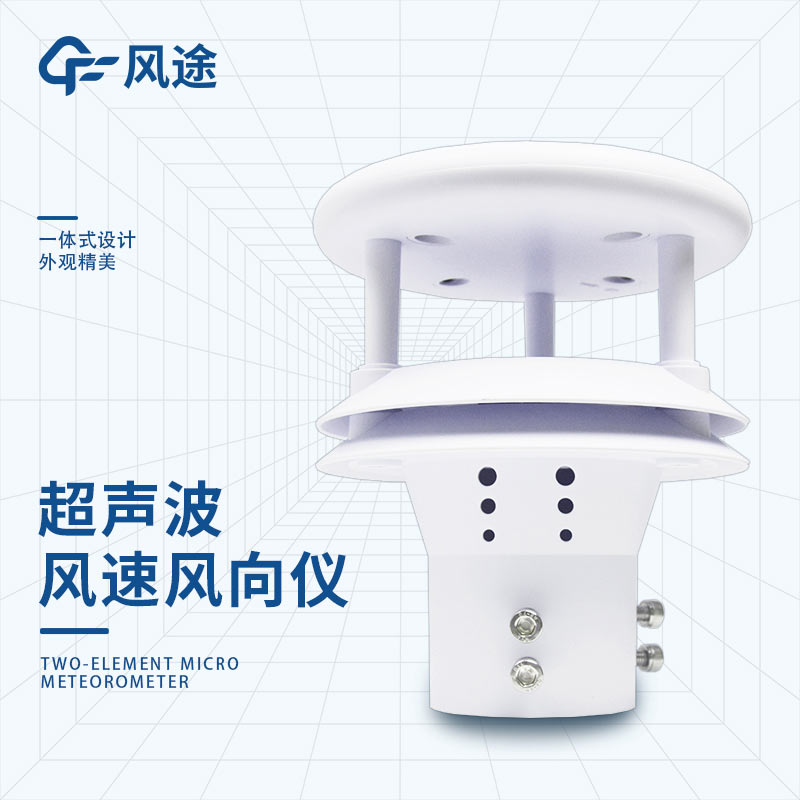Tianyi Sensor IOT Technology Co., Ltd
Sales Manager:Ms. Emily Wang
Cel,Whatsapp,Wechat:+86 15898932201
Email:info@fengtutec.com
Add:No. 155 Optoelectronic Industry Accelerator, Gaoxin District, Weifang, Shandong, China

Sales Manager:Ms. Emily Wang
Cel,Whatsapp,Wechat:+86 15898932201
Email:info@fengtutec.com
Add:No. 155 Optoelectronic Industry Accelerator, Gaoxin District, Weifang, Shandong, China
time:2025-05-06 09:45:56 source:Weather Station viewed:2 time
People have been measuring the wind for a long time, and the tools for wind measurement have been constantly upgraded. In the 15th century, Leonardo da Vinci designed a vane anemometer, marking the beginning of the era of scientific wind measurement. In 1846, Thomas Romney Robinson, a British naval officer, invented the four-cup anemometer, which standardized wind speed measurement. In the 20th century, mechanical rotating anemometers were widely used in fields such as meteorology and aviation.
Common wind measurement tools include mechanical anemometers, Pitot tube anemometers, hot-wire anemometers, etc.
Mechanical anemometers, such as the cup anemometer and the vane wind vane, have a simple structure and low cost, but they also have many limitations. Their rotating components are prone to wear and tear and require regular maintenance. They are greatly affected by environmental factors such as freezing, rain, snow, and dust. Acidic substances in the air can also corrode them and hinder their rotation. Due to the influence of inertial rotation, there is a large error in measuring the characteristics of instantaneous wind, and the displayed value is on the high side. Moreover, there is a limit to the starting wind speed, and the measurement data is not accurate enough at low wind speeds.
The Pitot tube anemometer is based on Bernoulli's equation and calculates the wind speed by measuring the difference between the total pressure and the static pressure. However, it has poor adaptability to complex airflow fields, and the installation position and direction have strict requirements. Otherwise, it will affect the measurement accuracy.
The hot-wire anemometer measures the wind speed by using the relationship between the heat dissipation rate of the thermal element and the wind speed. It has high measurement accuracy for low flow rates, but the probe is easily contaminated, resulting in a decline in performance. Also, it is not suitable for high-temperature, high-humidity, or corrosive environments.
The appearance of the Ultrasonic Anemometer has overcome many disadvantages of traditional wind measurement tools. It uses the ultrasonic time difference method to measure wind speed and direction, determining the wind speed and direction by calculating the time difference between the ultrasonic waves propagating with the wind and against the wind in the air.
Compared with the above-mentioned anemometers, its advantages are obvious:
It has no mechanical components, resulting in less wear and tear. It does not require maintenance or on-site calibration and has a long service life. There is no limit to the starting wind speed, and it can work at zero wind speed. It has a 360° all-round measurement without angle limitations and can obtain wind speed and wind direction data simultaneously. It has high measurement accuracy and a fast response speed, and can monitor wind speed changes in real time, being suitable for the measurement of high-speed winds. It adopts the random error identification technology. Even in strong winds, it can ensure low dispersion errors in measurement and provide a more stable output. It is not greatly affected by environmental factors such as temperature and humidity and is suitable for various meteorological environments, including harsh conditions such as high temperature, low temperature, and high altitude.

Some enterprises, in order to reduce wastewater treatment costs, secretly discharge untreated sewage directly into the external environment or municipal pipelines through illicitly installed concealed pipes. For example, a company in an industrial park discharged high-concentration phenol-containing...
Meteorology and soil moisture are two fundamental elements in agriculture. Meteorology determines the "timing" of agriculture, while soil moisture reflects the "favorable geographical conditions". Together, they form the environmental framework for crop growth.The dynamic changes...
In the process of coal mine production, wind measurement work is of great importance. The space underground in coal mines is relatively enclosed, and there are flammable and explosive substances such as gas and coal dust. Reasonable ventilation can effectively dilute and discharge gas, reduce the ga...
Wind speed and direction are important parameters in meteorological observation and environmental monitoring, and they play a significant role in many fields such as agricultural production, aerospace, and energy development. Accurate wind speed and direction data can provide strong support for disa...